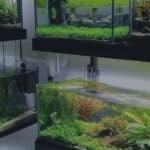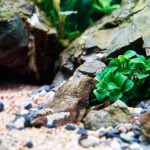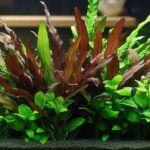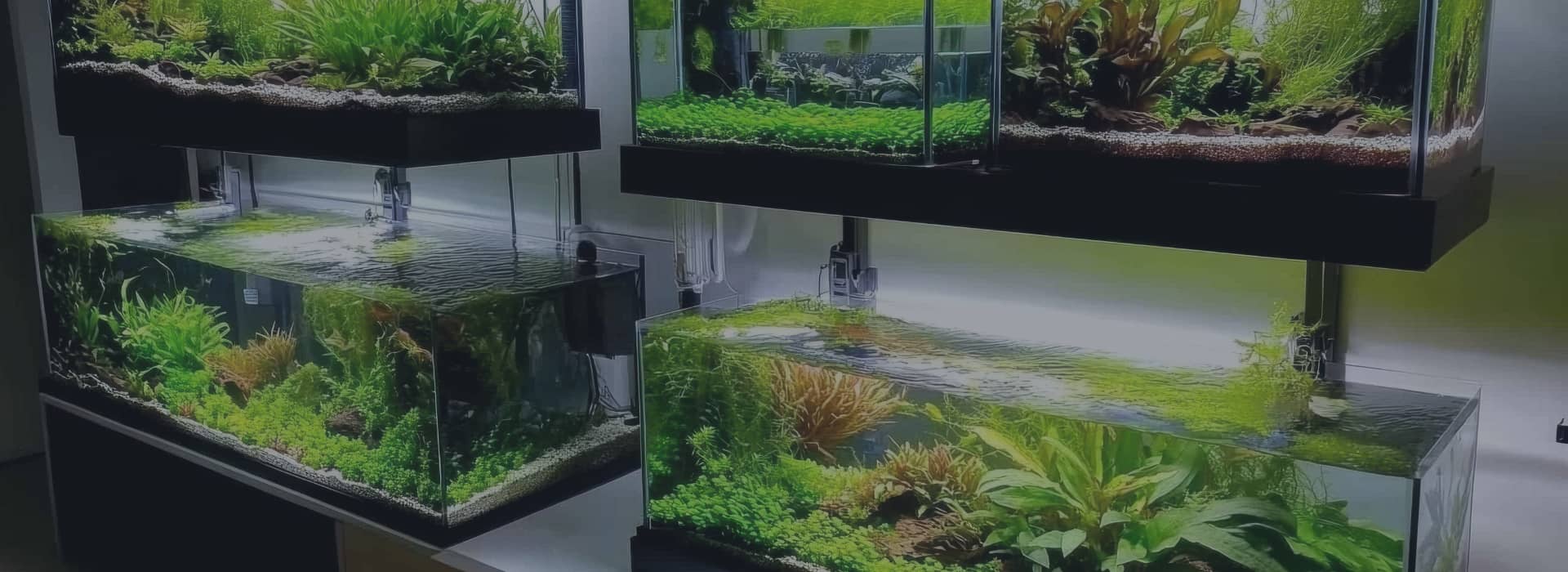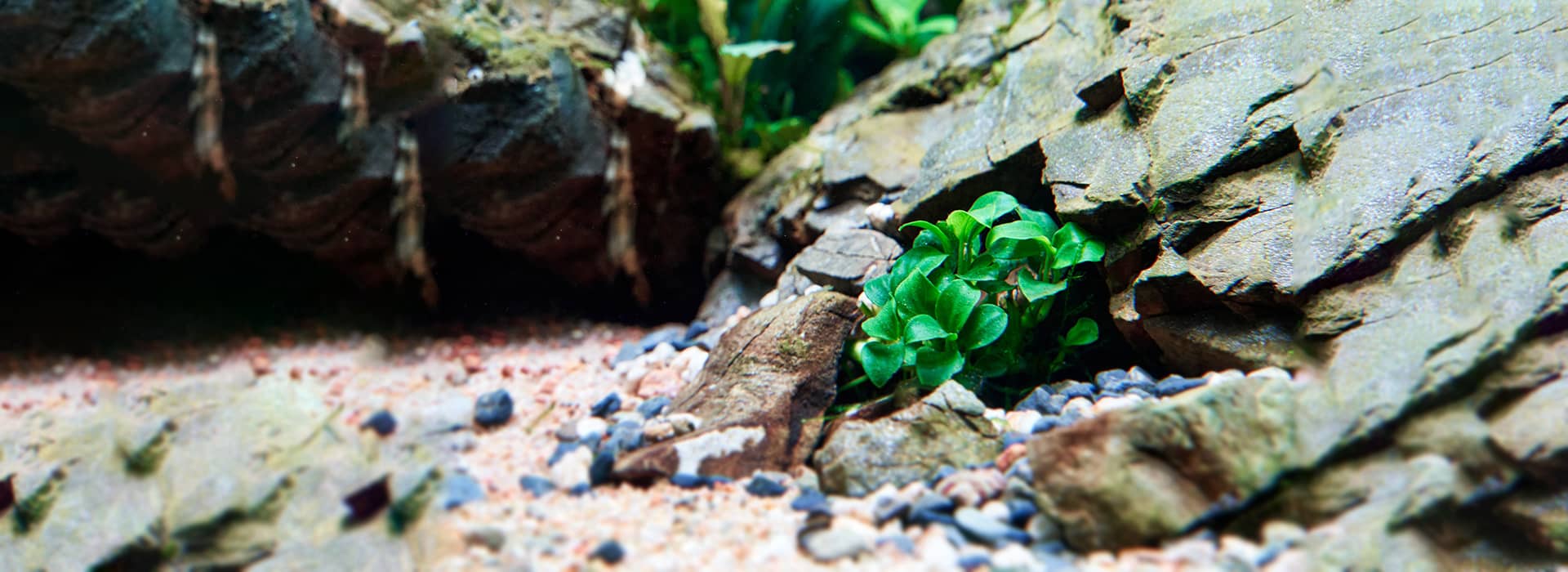Setting up a 10-gallon (38-litre) fish tank can be exciting for beginners in the aquarium hobby. This size is manageable, doesn’t require a large space, and can be a perfect introduction to the world of fishkeeping.
This guide will provide beginners with detailed steps and essential knowledge to establish a thriving aquatic habitat.
Choosing Your Tank: Kit vs. Empty Tank
You have two main options: an aquarium kit or an empty tank. An aquarium kit typically includes the tank, essential equipment like a filter, heater, hood, light, and some decorative items. It’s a convenient choice for beginners, offering ease of setup and less research upfront.
On the other hand, an empty tank allows you to select and customise your equipment and decor. This option might require more research and potentially a higher initial cost, but it allows for a personalised touch and the selection of higher-quality components.
In terms of material, you can choose between a glass or acrylic tank. Glass is more scratch-resistant, while acrylic is lighter and less prone to shattering.
Essential Equipment
Regardless of your choice between a kit or an empty tank, certain equipment is non-negotiable for a successful setup:
- Filter – It removes waste and toxins and maintains water quality. Select one that is suitable for your tank size
- Heater – It’s necessary to maintain a stable temperature that is ideal for your fish.
- Lighting – It’s essential for plant growth if you opt for a planted tank and viewing your fish.
- Substrate—This forms the bed of your aquarium and can be gravel, sand, or specialised aquarium soil. Select a substrate that suits the type of fish and plants you plan to keep.
- Aquarium Stand – Ensure your stand can support the weight of a fully equipped 10-gallon tank, which can weigh over 100 pounds when filled with water and decorations.
Other Materials
- Plants, Rocks, & Decorations – They not only make your tank aesthetically pleasing but also provide hiding places for your fish. Use decorations that are safe for aquarium use to avoid harming your fish.
- Water Conditioner – Use it to remove harmful chemicals from tap water, making it safe for fish.
- Water test kit – used for testing pH, ammonia, nitrite, and nitrate levels.
Step-by-Step Fish Tank Setup Guide
Choose a location
Find a stable, draft-free spot in your home near an electrical outlet but away from direct sunlight or high-traffic areas.
Clean Your Tank
Clean the tank with warm water using a cloth or sponge.
Add Substrate
Rinse the substrate thoroughly before adding it to your tank to remove dust and debris. Then, spread it at the bottom of the tank.
Instal Equipment
Set up your filter, heater, and any other equipment following the manufacturer’s instructions.
Decorate Your Tank
Add plants, rocks, and other decorations to create a natural environment for your fish.
Fill the Tank
Carefully fill your tank with water treated with a water conditioner to remove harmful chemicals.
Install the hood and light
Place the tank’s hood securely and set up the light following the manufacturer’s guidelines.
Cycle the Tank
Before adding fish, allow your tank to cycle for several weeks to establish beneficial bacteria that will help maintain water quality. To cycle your tank, run it with the filter and heater for at least a week, monitoring water parameters with a test kit.
Add Fish
Introduce fish to your aquarium gradually to avoid overwhelming the biological filtration system. When selecting fish, consider species that thrive in a 10-gallon tank.
Small, peaceful fish like guppies, tetras, and bettas are excellent choices. Research the adult size and space requirements of your chosen species to avoid overcrowding.
Maintain Your Tank
To ensure a healthy environment for your fish, regularly test water parameters, perform partial water changes, and clean your tank.
Selecting fish for your 10-gallon aquarium
Choosing the right fish for a 10-gallon tank is crucial for the health and happiness of your aquatic pets. A 10-gallon tank, being relatively small, limits the number of fish you can keep and the species that will thrive in such an environment. Here are some suitable options:
1. Bettas: Bettas are a popular choice known for their vibrant colours and elegant fins. They require warm water and do well alone or with certain peaceful species.
2. Neon Tetras: With their bright neon blue and red stripes, these schooling fish are a delight to watch. They prefer to be in groups of at least six.
3. Harlequin Rasboras: These peaceful schooling fish add activity and colour to a tank. They do best in groups and with similar-sized peaceful fish.
4. Ember Tetras: Small and peaceful, Ember Tetras are known for their bright orange colouration. They thrive in a planted tank and prefer to be in schools.
5. Dwarf Gouramis: These are beautiful and generally peaceful fish that can add a lot of character to a tank. They need hiding spots and a calm environment.
6. White Cloud Mountain Minnows: These hardy and easy-to-care-for minnows are ideal for unheated tanks. They prefer living in schools and are very active.
When stocking a 10-gallon tank, consider the fish’s adult size, temperament, and environmental needs. Overstocking can lead to poor water quality and stress, which can cause health issues for your fish.
Frequently Asked Questions
How many fish can I keep in a 10-gallon tank?
The number of fish depends on the species and their adult size. A general rule is one inch of fish per gallon of water, but always research your specific fish’s needs.
How often should I change the water in my tank?
Perform partial water changes of about 20-25% every two weeks, but this can vary depending on your tank’s bioload.
Do I need a filter for a 10-gallon tank?
Yes, a filter is essential for maintaining water quality and providing oxygenation for your fish.
How much substrate do I need for my 10-gallon tank?
A general rule is to use about 1-2 pounds of substrate per gallon of water. Depending on the depth you want, you’ll need 10-20 pounds of substrate for a 10-gallon tank.
A 10-gallon fish tank is a wonderful start for any aspiring aquarist. With the right setup and maintenance, it can become a thriving ecosystem and a source of joy. Follow this guide to create a healthy and thriving environment for your aquatic pets.
